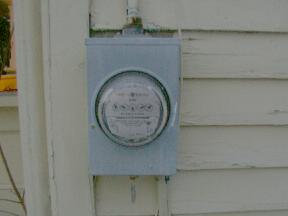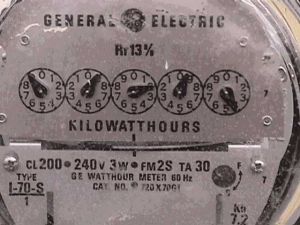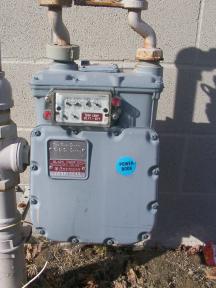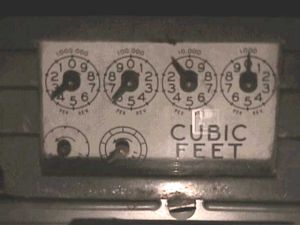
*Reading Your
Utility Meters*
By Stryder
You probably don’t ever really NEED to read your own electric or natural gas meter. Your local utility company will be sure to come around and read it every so often so they can bill you. Many of us who are still on the grid like to keep track of our usage for a number of reasons though. One reason is as a double check to make sure that our gas and electric bills are accurate. Another is to track our conservation efforts and gauge their effectiveness. Yet another reason is to budget for the next bill so we don’t have a heart attack when we open that bi-monthly envelope from the power or gas company.
Reading a gas or electric meter is really very simple. Whether you have a regular electric meter, a day/night electric meter, or a natural gas meter the basic procedures are all the same.
Electric Meters


89194 (current reading) - 87485 (previous reading) = 1709 kWh used between readings
8919 (current reading) - 8748 (previous reading) = 170(difference in readings) x 10 (meter multiplier) = 1700 kWh used between readings
1709 kWh x 13.0966 ˘/KWh = $223.82 + $15.52 bi-monthly grid access charge + $ 7.18 state sales tax = $246.52 total bi-monthly electric cost
Day/Night Electric Meters
If you can shift a substantial portion of your usage to the nighttime and if you choose day/night billing service you may significantly reduce your energy cost. A special day/night meter will be installed that is read the same way as a regular electric meter, except that it has two rows of dials. The top row is the day rate (usually 0700 to 2330 and the bottom row measures the usage on the night rate which is cheaper. Remember the basic steps from above and just keep the two readings from the top and bottom row of dials separate as you read them. Then multiply each reading (day and night) by the correct cost rate factor and add the two numbers together to figure the total cost of use.
Natural Gas Meters

Natural gas meters do not look the same as electric meters, but the basic steps of reading the meter are exactly the same. Natural gas meters register hundreds of cubic feet (ccf) of gas usage instead of kWh as does an electric meter. Natural gas meters have four or five dials in a row, which measure the gas and two dials below them, which are used for testing and calibration and can be ignored (unless you work for the gas company.)
When reading your gas meter remember the steps:

3610 (current reading) - 3345 (previous reading) = 265 ccf used between readings x 1.0290 content factor = 272.6 therms
6 therms x 0.0 ˘/therm (the first 6 therms were free per account this month) + 94 therms x 85.7963 ˘/therm + 172.6 therms x 58.2768˘/therm + $30.34 bi-monthly gas access charge + $ 6.35 state sales tax = $217.91 total bi-monthly natural gas cost
As you can see reading a gas or electric meter is really very simple and can be very useful as well. So ... Go give it a try if you want to make sure you’ve got a handle on your usage. You may even want to think about assigning this as a job for the kids in the house to read, record, and calculate the monthly usage as a simple project in math, graphing and household economics.
Get out and train!
Stryder
All materials at this site not otherwise credited are Copyright (c) 1996-2002 Trip Williams. All rights reserved. May be reproduced for personal use only. Use of any material contained herein is subject to stated terms or written permission.